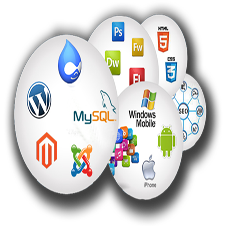
In business since 1981, the client is a leading manufacturer of Power Transformers and Gas Insulated Switchgear as per IEC, ANSI, BS and various other standards. The companyís plants, which are certified for ISO 9001, ISO 14001 and OHSAS 18001, are situated at Meerut, 60kms from National Capital of India, New Delhi. Company is focused on serving quality-conscious customers across diverse sectors: TD Utilities, Power Generation, EPC Contractors, Railways and Industry. Client wanted to migrate their existing windows based manufacturing ERP software to cloud. The goal was to increase the current market share by reaching out to small & medium sized organizations, by providing easy access to the full feature set of the existing ERP system without the need of expensive & complex in-house solution setups. The clientís primary need was to find a cost effective, scalable alternative to hosting its ERP solution at end userís premises or at a traditional third party hosting. The security was a major concern and need was for a secure layer above the ERP software which could set the authentication for the ERP to communicate with the end users. Ampere studied these requirements and formulated a complete roadmap detailing out the development considerations and methodology for moving the existing solution to Windows Azure. Also, to introduce advance security parameters like the Two-Factor-Authentication, Azure AD Authentication. The solution was successfully deployed to Azure Cloud computing platform, also taking advantage of Microsoft SQL Azure & Blog data storage services.

After running the Standalone ERP for more than 10 years - providing an end-to-end ERP solution but the Product was not upmarket to take to the next level. They wanted to market the product and were facing challenges to scale it.

We developed an Azure cloud based security system for the ERP and then move the Database to the Azure cloud. The end product is hosted on the cloud. We implemented the securities with feature like Two-Factor-Authentication, Azure Active Directory Authentication, License Management, User Management and online payment Gateway.
Some of the major activities done to provide the required solution included Ė

The product is now managed at a greater level and it has been accepted by many organizations. The product is at the next level and the goal to market the product as SAAS has been accomplished.

Development Methodology: Agile using SCRUM
Project Management Tool: Microsoft Visual Studio Scrum board
User Interface: C#, ASP .Net MVC, HTML5, CSS3, AngularJS, Bootstrap
Frameworks: .Net Framework 4.5
Business Logic:.NET Web API
Database:Microsoft SQL Azure & Azure Blob Storage
IDE: Visual Studio 2013
Supported:Internet Explorer 8 or above, Firefox & Chrome with 25 devices combinations.